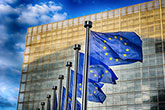Western Potash commences drilling at Milestone Phase 1 Project
Published by Nicholas Woodroof,
Editor
World Fertilizer,
The Milestone Phase 1 Project will use advanced horizontal drilling techniques to initially target the high-grade potash bed, then by using selective dissolution, preferentially leach the potash to the surface. This will be the first potash mine in the world that will leave no salt tailings on the surface, thereby significantly reducing water consumption.
The drilling programme will last approximately 4 months and will consist of 6 wells that connect to 3 caverns. Each cavern consists of an injection well under the potash bed, and connected withdrawal well which returns the brine back to the surface. After successful drilling and with appropriate regulatory approvals, the caverns will firstly start ‘cold mining’ to enlarge the caverns and saturate the brine with salt in preparation for production, followed by ‘hot mining’ that will recirculate brine into the caverns and preferentially extract the KCl resulting in the buildup of an inventory of potash in the crystal pond. By mid-2020 the process plant will be constructed and ready to harvest the inventory of potash in the pond. The plant will then de-brine, dry and compact the potash and truck to a nearby distribution centre.
Bill Xue, President and CEO of Western Resources commented: “Western Potash Corp. is very pleased to have reached this milestone on the Project. Our strong project team enabled us to reach this milestone in line with our schedule. We are very confident that this project will lead to the world’s first selective solution potash mine that leaves no surface tailings in Saskatchewan."
Read the article online at: https://www.worldfertilizer.com/project-news/17072019/western-potash-commences-drilling-at-milestone-phase-1-project/
You might also like
Fertilizers Europe releases statement on CBAM
Fertilizers Europe has released a statement regarding its thoughts on the CBAM package released by the European Commission on 17 December 2025.

